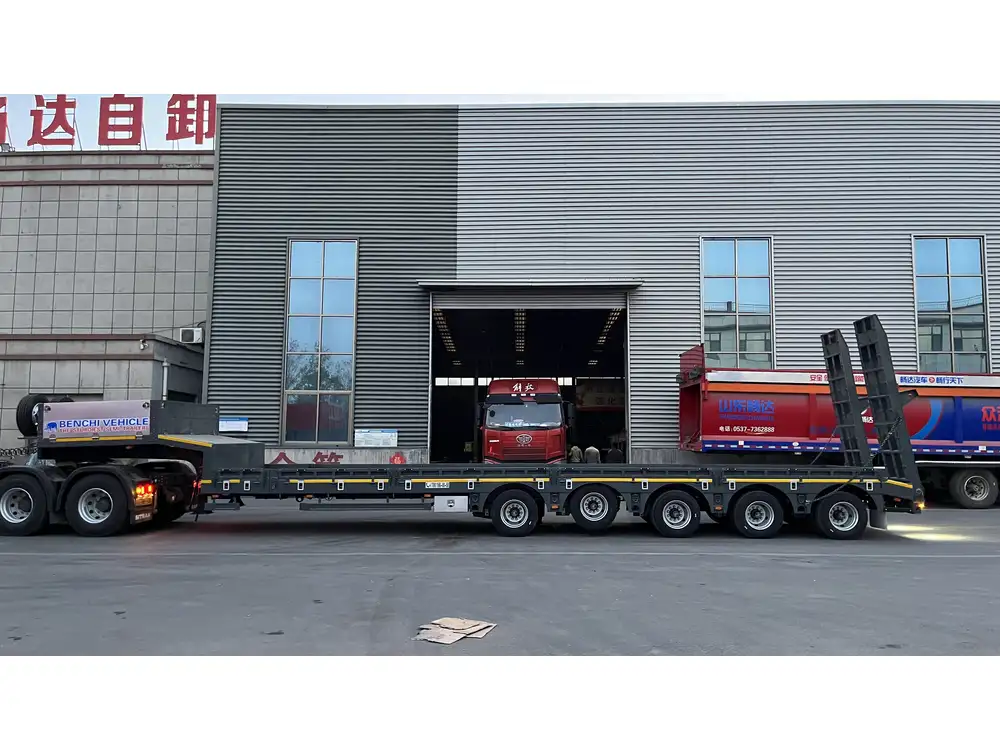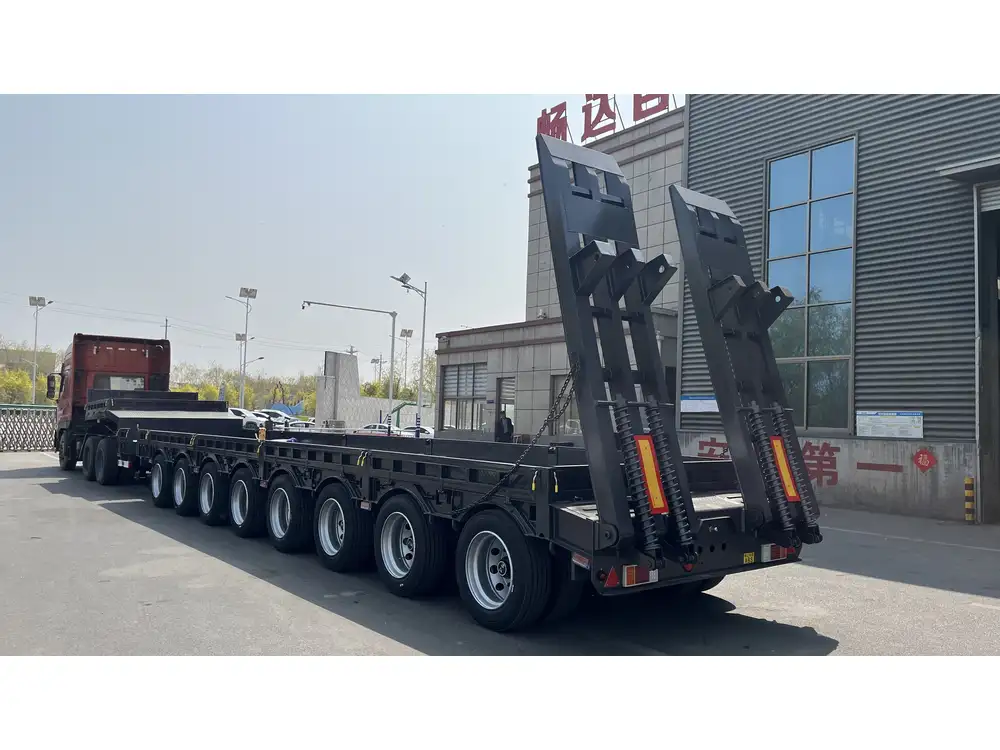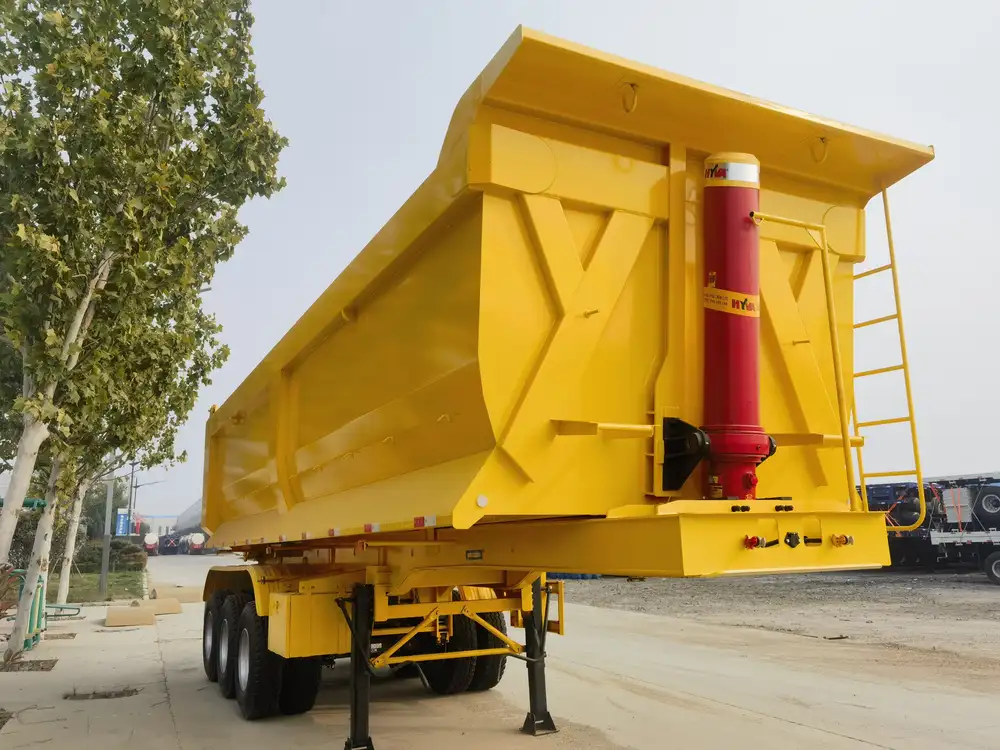When it comes to logistics and transportation, understanding the dimensions of trailers is crucial for seamless operations. One of the primary questions that surface in the realm of semi-trailer usage pertains to their height. Knowing how tall a trailer is can significantly impact various facets of transport, including regulatory compliance, loading and unloading efficiency, and compatibility with different vehicles and infrastructures. In this guide, we delve into the various aspects surrounding trailer height, addressing common queries and facilitating informed decisions.
Understanding Trailer Dimensions
Before we specifically tackle the height of trailers, it’s essential to grasp the basic dimensions of a semi-trailer. The key measurements include:
| Dimension | Description |
|---|---|
| Length | The total length of the trailer from the front to the rear. |
| Width | The widest span of the trailer, often standardized for rail and road transport. |
| Height | The vertical measurement from the ground to the highest point of the trailer. |
Standard Trailer Heights
The height of a trailer is typically dictated by a combination of regulatory standards and the specific purpose for which the trailer has been designed.

Common Trailer Types and Their Heights
| Trailer Type | Standard Height |
|---|---|
| Flatbed Trailer | 13.5 to 14 feet |
| Dry Van Trailer | 13 to 13.5 feet |
| Reefer Trailer | 13.6 feet |
| Car Hauler Trailer | 10 to 12 feet |
| Lowboy Trailer | 12 to 14 feet (with some models going lower) |
These heights can vary based on trailer design and additional custom modifications made by manufacturers. For instance, some specialized trailers can be constructed lower or higher depending on their intended use.
Factors Affecting Trailer Height
Several factors contribute to the ultimate height of a trailer. Understanding these can help manufacturers tailor products to meet specific industry needs.
1. Regulatory Compliance
In many regions, transportation authorities impose restrictions on vehicle heights to ensure safety on highways and bridges. For example, in the United States, the Federal Highway Administration mandates a maximum height of 13.5 feet for most commercial vehicles, including trailers. Exceeding this limit can lead to fines and legal complications.

2. Load Type
The type of cargo being transported can also necessitate adjustments in height. For example, a flatbed trailer may need to accommodate oversized construction equipment, requiring additional height adjustments for safe loading.
3. Suspension System
The trailer’s suspension type influences its height. Air suspension systems can lower or raise the trailer as needed for loading and unloading processes, impacting the effective height during transportation.
4. Tire Size
Different tire sizes can also alter the trailer’s height. Larger tires may elevate the trailer, impacting compliance with height regulations and loading configurations.

Implications of Trailer Height in Transport
Understanding the dimensions of a trailer, especially its height, has several implications for transport and logistics operations.
A. Compatibility with Loading Docks
One of the significant factors affecting transport efficiency is the compatibility of trailer height with loading docks. An ideal height ensures smooth loading and unloading processes, minimizing the risk of accidents and damage to both the trailer and the cargo.
B. Weight Distribution and Stability
High trailers may have different handling characteristics compared to standard-height trailers. Proper weight distribution is essential for maintaining stability, particularly during turns and sudden maneuvers. It’s critical to adhere to guidelines regarding how load height interacts with the center of gravity.

C. Bridge Clearances
Transporting tall trailers poses risks when navigating under bridges with restricted height clearances. Not only could this result in accidents, but it can also lead to increased logistical planning to identify routes that accommodate trailer dimensions.
Determining Your Trailer Needs
When considering the height of a trailer, we recommend adopting a multi-faceted approach to ensure that your specific needs are met.
1. Evaluate the Cargo
What type of goods will you be transporting? Are they oversized or unusually shaped? Understanding the size and nature of your cargo is paramount when selecting a trailer height.

2. Understand Regulatory Requirements
Research the height regulations for your specific region to avoid unnecessary fines and complications. It’s prudent to consult local transport authorities or licensing agencies for detailed information.
3. Consider the Operating Environment
Will you primarily be operating on highways, city roads, or in rural areas? Each environment has unique challenges. For instance, navigating city streets may require lower-profile trailers to accommodate lower bridges and tight turns.
4. Plan for Flexibility
If your business model involves transporting a variety of goods, consider investing in adjustable-height trailers. Such models offer versatility, allowing drivers to respond swiftly to changing cargo demands.

Innovative Solutions in Trailer Design
With advancements in technology and engineering, manufacturers are continually developing innovative solutions to address height concerns effectively.
A. Air Ride Suspension
This system allows trailers to lower and raise their height according to the load, making them more adaptable for various cargo and loading scenarios. For example, air ride suspension can facilitate easy loading by lowering the trailer to a comfortable height, subsequently raising it during transit for optimal aerodynamic performance.
B. Modular Trailer Systems
These trailers are designed in segments, allowing for the addition or removal of components to adjust the overall height of the trailer as needed. This design fosters customization, enabling businesses to react quickly to evolving transport demands.

C. Enhanced Safety Features
Modern trailers come equipped with sensors and alarms that warn drivers if they are approaching height limits or navigating through low clearances. Such systems help mitigate risks associated with exceeding height restrictions.
Conclusion: Making Informed Decisions on Trailer Height
Understanding the question of how tall a trailer can be is integral to effective transportation management. Whether you are a logistics manager, a fleet owner, or an individual seeking to purchase a trailer, ensuring that you have a firm grasp of trailer dimensions—and specifically height—will allow you to streamline operational processes, ensure compliance with regulatory standards, and enhance safety during transit.
Investing time in understanding these aspects will undoubtedly pay dividends, leading to more efficient logistics solutions tailored to your specific needs. Height is not merely a measurement; it is an essential element that influences operational efficiency, safety, and compliance in the world of transport.
By taking precise measurements, thoroughly assessing the types of cargo being transported, and keeping abreast of regulatory standards, you can optimize your trailer selection process, making well-informed choices that benefit your business in the long run.



